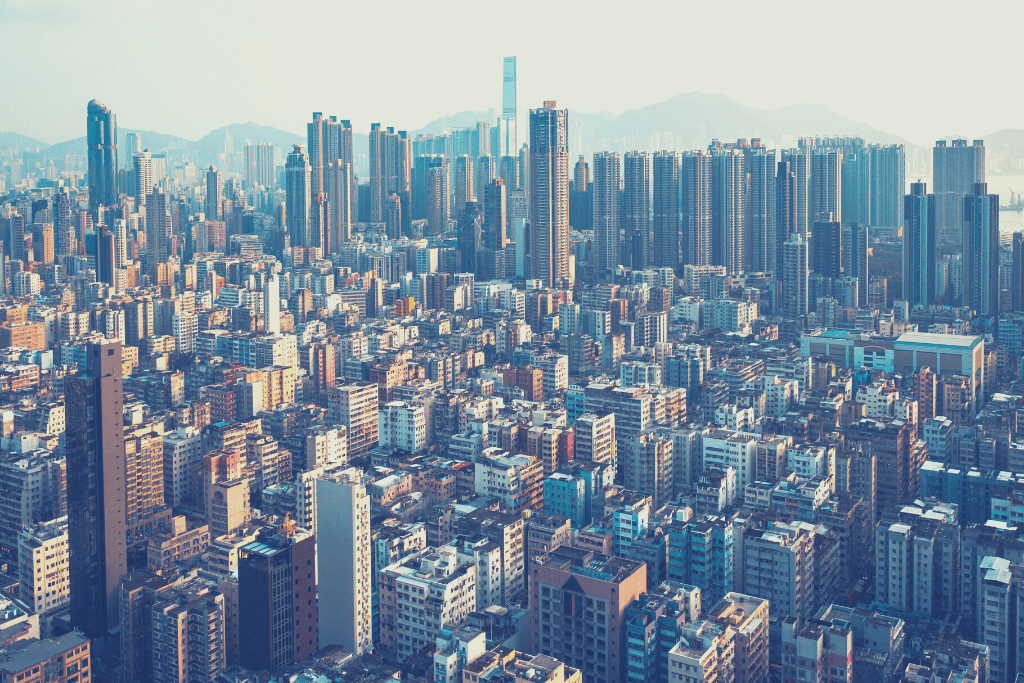By 2050, 70 percent of the world’s forecasted 10 billion population will live in cities, translating into roughly 7 billion urban dwellers, compared to 4.4 billion today.
Most of this booming urbanization will take place in emerging economies such as China, India, and Indonesia. Even though these countries boast a vast land mass, they might still struggle to accommodate this urban growth in terms of land to build.
By some estimates, if these three Asian giants were to become as urbanized as the USA in the next few decades, China would have to build the equivalent of three USAs; India five USAs; and Indonesia more than two USAs — translating into a total of more than 10 of them.
Given these acute urban design challenges, many planners and futurists have begun to propose a new solution: Vertical cities.
What’s a Vertical City?

A vertical city is an entire human habitat contained in a super-tall building or an interconnected network of super-tall buildings; therefore, it must not be confused merely with a dense urban center with many skyscrapers.
The core idea behind a vertical city to save resources and be close to everything is nothing new: Over 2,000 years ago, in Carthage, which is situated in modern Tunisia, a tight residential center with buildings as high as six stories, already existed. Thanks to advancing architectural technologies, the height of the buildings kept climbing.
However, it was a modern-day building like the Burj Khalifa in Dubai, which has the capacity of accommodating 100,000 people in its 160-story structure, that woke visionaries up to realize the possibilities and opportunities. China, home to the largest number of super-tall buildings in the world, followed the course until 2022.
Advantages and Challenges of a Vertical City

Especially since they have to be built with the most cutting-edge architectural technologies, ultra-tall buildings are among the most sustainable urban planning solutions. They positively contribute to the environment by averting the loss of agricultural land while also reducing air pollution, energy needs, commuting distances, and dependency on roads.
Even though a vertical city might evoke post-apocalyptic and bleak imagery of complete isolation and disconnection, the opposite can be true through the right design features. The structures of vertical cities can also feature “vertical forests” with tens of thousands of trees, stunning sky gardens and bridges, green roofs, as well as a firm commitment to public spaces.
On the other hand, building the utopic vertical city in the correct and sustainable way requires an extraordinary amount of funding and resources and, thus, is not easily accessible.
Some also argue that vertical cities could accelerate the risks of isolation, and mental illness, and they can help to speed up the spread of potential diseases. Severe winds at extreme heights are also known to cause motion sickness.
Bottomline

It’s no accident that every science-fiction film, from Metropolis to Blade Runner through to Star Wars, envisages the dense, multi-level city of the future,
Anthony Wood, President of the Council of Tall Buildings and Urban Habitat, to The Guardian. “The reason is because it completely makes sense.”
No solution will single-handedly address the world’s biggest challenges, such as climate change, urbanization boom, or resource distribution, and vertical cities are no exception.
In many places with growing economies yet low population density, such as countries like Australia, Mongolia, or Botswana, vertical cities will probably never be needed.
However, given the urgency and scale of our global problems, vertical cities will likely form a part of the ecosystem of a diverse range of solutions.






